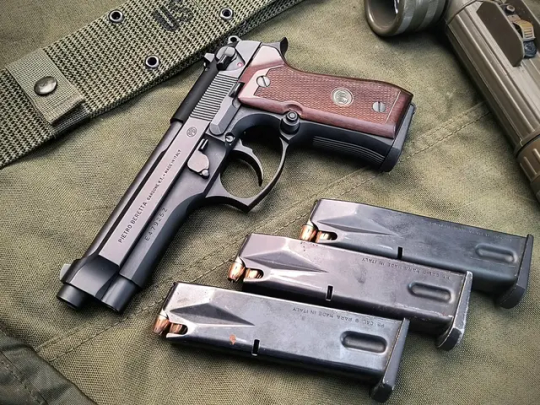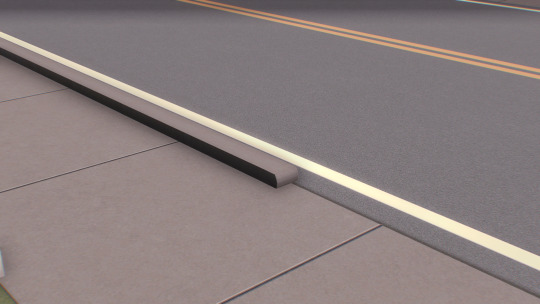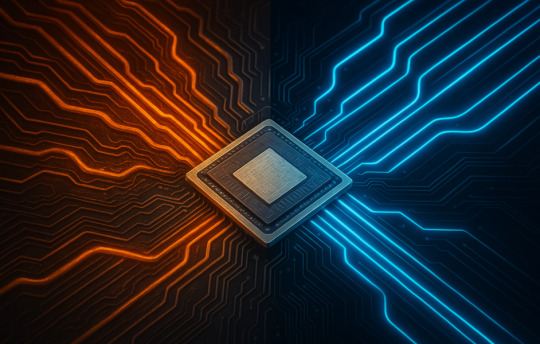#adopt modular designs
Explore tagged Tumblr posts
Text
The Importance of Designing Products for Longevity and Reusability
As consumer expectations evolve and businesses strive to meet the demand for higher-quality, longer-lasting products, designing with longevity and reusability in mind has become a critical aspect of modern product development. Companies must focus on creating products that meet customer needs and stand the test of time. This is why many companies explore different places to source products that will help them deliver greater value to consumers and establish a strong brand reputation. For instance, product sourcing in India is popular due to its rich manufacturing capabilities and diverse materials.
So, what does it mean to design products for longevity and reusability? It involves creating items that are reliable and designed to endure regular use. Additionally, it includes making products that can be easily repaired, upgraded, or reused when necessary to minimize the need for frequent replacements.
In this article, we’ll dive into why designing for longevity and reusability is so important and how companies can achieve this through thoughtful product design.
Enhances Product Usability
Products designed for longevity are inherently more reliable and practical for long-term use. When manufacturers prioritize high-quality materials, they create products that perform consistently over time, reducing the risk of breakdowns or malfunctions. This focus on usability ensures that customers can depend on their purchases, making them feel confident about the product’s value. Moreover, brands that adopt modular designs further improve their products’ usability by allowing specific parts to be replaced or upgraded without discarding the entire product.
When it comes to electronics or furniture, for example, components that wear out can be swapped for new ones. This saves users the cost and hassle of a complete replacement. Ultimately, designing for usability enhances the overall customer experience while encouraging responsible consumption.
Boosts Customer Satisfaction
When products are built to last, customers also experience greater satisfaction, as they know their investment is worthwhile. Brands that offer durable, well-designed products demonstrate their commitment to quality and reliability, which helps to build trust and foster long-term loyalty.
Additionally, designing products for repairability and upgradability adds another layer of value. In the case of businesses that offer spare parts, repair kits, or upgrades, their products can easily be enhanced with modular improvements, giving the customers a sense of control and pride in ownership. This approach satisfies customers and encourages repeat purchases and positive word-of-mouth recommendations.
Reduces Waste and Environmental Impact
Another compelling reason to design for longevity and reusability is the positive impact it has on the environment. Products with a longer lifespan reduce the frequency of disposal, thereby decreasing the volume of waste that ends up in landfills.
In line with this, brands can design items that can be recycled or repurposed. This involves using materials that can be recovered and reused, which minimizes the need for new resources when producing new items. Some examples include producing modular electronics or using biodegradable packaging. Businesses that take these steps contribute to waste reduction while aligning with the growing consumer demand for eco-friendly products. This approach also enhances a brand’s reputation as a sustainable and responsible company.
Cost-Effective for Customers
Products designed for longevity and reusability are also more cost-effective for customers. Although many of these items usually have a higher upfront cost, they save consumers money in the long run by eliminating the need for frequent replacements.
If customers invest in a high-quality appliance that lasts for years, it’s far more economical than repeatedly buying cheaper, short-lived alternatives. Furthermore, modular designs reduce maintenance costs by allowing users to replace individual components instead of purchasing entirely new products. As businesses offer customers affordable ways to maintain and extend the life of their purchases, they can appeal to budget-conscious buyers who value durability and practicality.
Supports Circular Economy Principles
Designing for longevity and reusability also plays a crucial role in supporting the circular economy. It’s a system that prioritizes keeping resources in use for as long as possible. Products that can be repaired, reused, or recycled help reduce the need for virgin materials, thus conserving natural resources and lowering production costs. Additionally, creating products with timeless designs rather than following fleeting trends encourages consumers to use them for extended periods. This reduces unnecessary waste caused by outdated or unfashionable items.
For example, when customers purchase a classic, well-crafted piece of furniture or clothing, they have items that remain relevant and functional for years. Businesses that adopt principles of producing items that support the circular economy align their brand with global efforts to promote sustainability while meeting the needs of conscious consumers.
Conclusion
Designing products for longevity and reusability is more than about meeting current trends. It focuses on shaping a future where quality, sustainability, and value take precedence. As consumers become more mindful of their purchasing decisions, businesses that prioritize longevity and reusability will stand out as leaders in sustainable innovation. With this in mind, brands must learn to embrace these principles and create products that meet modern demands while contributing to a better, more sustainable future for all.
Germaine Ignacio
Germaine Ignacio is a freelance writer. As a Psychology major, she is interested in how investing in personal growth and happiness can improve professional productivity. She is also an avid baker who lives with two cats.
Pin or save this post for later!
Share in the comments below: Questions go here
#product design#product longevity#product reusability#brand reputation#diverse materials#product reliability#product long-term use#adopt modular designs#reduces waste#biodegradable packaging#waste reduction#sustainable company#responsible company#budget conscious
0 notes
Text
Good News - August 15-21
Like these weekly compilations? Tip me at $kaybarr1735 or check out my new(ly repurposed) Patreon!
1. Smart hives and dancing robot bees could boost sustainable beekeeping

“[Researchers] developed a digital comb—a thin circuit board equipped with various sensors around which bees build their combs. Several of these in each hive can then transmit data to researchers, providing real-time monitoring. [… Digital comb] can [also] be activated to heat up certain parts of a beehive […] to keep the bees warm during the winter[…. N]ot only have [honeybee] colonies reacted positively, but swarm intelligence responds to the temperature changes by reducing the bees' own heat production, helping them save energy.”
2. Babirusa pigs born at London Zoo for first time

“Thanks to their gnarly tusks […] and hairless bodies, the pigs are often called "rat pigs" or "demon pigs” in their native Indonesia[….] “[The piglets] are already looking really strong and have so much energy - scampering around their home and chasing each other - it’s a joy to watch. They’re quite easy to tell apart thanks to their individual hair styles - one has a head of fuzzy red hair, while its sibling has a tuft of dark brown hair.””
3. 6,000 sheep will soon be grazing on 10,000 acres of Texas solar fields

“The animals are more efficient than lawn mowers, since they can get into the nooks and crannies under panel arrays[….] Mowing is also more likely to kick up rocks or other debris, damaging panels that then must be repaired, adding to costs. Agrivoltaics projects involving sheep have been shown to improve the quality of the soil, since their manure is a natural fertilizer. […] Using sheep instead of mowers also cuts down on fossil fuel use, while allowing native plants to mature and bloom.”
4. Florida is building the world's largest environmental restoration project

“Florida is embarking on an ambitious ecological restoration project in the Everglades: building a reservoir large enough to secure the state's water supply. […] As well as protecting the drinking water of South Floridians, the reservoir is also intended to dramatically reduce the algae-causing discharges that have previously shut down beaches and caused mass fish die-offs.”
5. The Right to Repair Movement Continues to Accelerate

“Consumers can now demand that manufacturers repair products [including mobile phones….] The liability period for product defects is extended by 12 months after repair, incentivising repairs over replacements. [… M]anufacturers may need to redesign products for easier disassembly, repair, and durability. This could include adopting modular designs, standardizing parts, and developing diagnostic tools for assessing the health of a particular product. In the long run, this could ultimately bring down both manufacturing and repair costs.”
6. Federal Judge Rules Trans Teen Can Play Soccer Just In Time For Her To Attend First Practice

“Today, standing in front of a courtroom, attorneys for Parker Tirrell and Iris Turmelle, two transgender girls, won an emergency temporary restraining order allowing Tirrell to continue playing soccer with her friends. […] Tirrell joined her soccer team last year and received full support from her teammates, who, according to the filing, are her biggest source of emotional support and acceptance.”
7. Pilot study uses recycled glass to grow plants for salsa ingredients

“"We're trying to reduce landfill waste at the same time as growing edible vegetables," says Andrea Quezada, a chemistry graduate student[….] Early results suggest that the plants grown in recyclable glass have faster growth rates and retain more water compared to those grown in 100% traditional soil. [… T]he pots that included any amount of recyclable glass [also] didn't have any fungal growth.”
8. Feds announce funding push for ropeless fishing gear that spares rare whales

“Federal fishing managers are promoting the use of ropeless gear in the lobster and crab fishing industries because of the plight of North Atlantic right whales. […] Lobster fishing is typically performed with traps on the ocean bottom that are connected to the surface via a vertical line. In ropeless fishing methods, fishermen use systems such an inflatable lift bag that brings the trap to the surface.”
9. Solar farms can benefit nature and boost biodiversity. Here’s how

“[… M]anaging solar farms as wildflower meadows can benefit bumblebee foraging and nesting, while larger solar farms can increase pollinator densities in surrounding landscapes[….] Solar farms have been found to boost the diversity and abundance of certain plants, invertebrates and birds, compared to that on farmland, if solar panels are integrated with vegetation, even in urban areas.”
10. National Wildlife Federation Forms Tribal Advisory Council to Guide Conservation Initiatives, Partnerships

“The council will provide expertise and consultation related to respecting Indigenous Knowledges; wildlife and natural resources; Indian law and policy; Free, Prior and Informed Consent[… as well as] help ensure the Federation’s actions honor and respect the experiences and sovereignty of Indigenous partners.”
August 8-14 news here | (all credit for images and written material can be found at the source linked; I don’t claim credit for anything but curating.)
#hopepunk#good news#honeybee#bees#technology#beekeeping#piglet#london#zoo#sheep#solar panels#solar energy#solar power#solar#florida#everglades#water#right to repair#planned obsolescence#trans rights#trans#soccer#football#recycling#plants#gardening#fishing#whales#indigenous#wildlife
137 notes
·
View notes
Text




"Italian Thoroughbred"
1990 Beretta 92FS (Italy) 9x19mm
As the 1970's drew to a close and a disastrous war in Vietnam slowly vanished in the rear-view mirror, the United States military sought to replace the aging .45ACP cartridge they had been using since the First World War. As other nations began to adopt and standardize high-capacity double-stack 9mm pistols, the US military organized the Joint Service Small Arms Program in 1979 to hold trials for a new standard sidearm in tests that would eventually become the "XM9 Program" between 1979 and 1985.
The requirements would be daunting, as all submitted pistols would be subject to a level of torture and testing the likes of which had never been seen before in military pistol trials. Phase one testing to narrow down the top competitors involved a 12,000 round endurance test, which only two of the pistols survived. Of the eight pistols submitted, one alone would rise to the top during phase-two testing with a seemingly impossible level of accuracy, reliability, and durability the likes of which had never been seen in a military sidearm.
The Beretta Model 92's rugged frame and ingenious split firing-pin safety allowed it to survive a litany of drop-tests, its 180° ejection port allowed it to beat all mud and debris tests, and its solid construction allowed it to go an average of 35,000 rounds between parts failures; far exceeding the original requirement of 6,000 rounds. The Beretta 92 would be officially adopted by the US military as the M9 in 1985. In a hilarious example of companies behaving like sore losers, there was enough of an uproar and demand for a rematch that the tests were conducted a second time in 1988 as the "XM10 Program." Much to the chagrin of the challengers, the Beretta 92 came out on top again.
Adopted formally under the designation "M9", the Beretta would go on to serve all branches of the US military favorably from 1985 to the present day. Though it is in the process of being phased out for a more modern "modular" handgun, those who carried one into combat (like my father) swear by its accuracy and reliability in harsh combat environments.
#beretta#beretta92fs#beretta m9#beretta 92#m9 pistol#italian built#retro#historical armaments#military history
28 notes
·
View notes
Text

Project NEXUS - Rock, Roll and Thomas Light In the not too distant future, the brilliant Dr. Light and Dr Wily, two long time robotics engineers managed to create an easily modular and light framework to create everyday Robots, the Master framework is a humanoid design that was easily customized and modular to allow for neigh infinite possibilities. soon so called Robot Masters became widespread and adopted my most major heavy industrial sectors to create a safer work environment
The first three two prototypes made by Dr. Light were made to test out the highly advance positronic brain and to prove that robots can be integrated into everyday life. The two Masters, Rock and Roll were at first to be made as lab helpers to the two doctors. the kind Dr. Light who saw their developing minds like children soon started to treat them as his own flesh and blood.
21 notes
·
View notes
Text

Arctic Cheetah
The Arctic Cheetah was originally designed by Clan Ice Hellion to replace the Mist Lynx OmniMech. Shortly after they began production in 3037, Clan Smoke Jaguar conquered the factory on Foster that produced the design, enabling the Jaguars to replace their Mist Lynx 'Mechs. The design was first encountered by Draconis Combine forces during the Battle of Luthien, leading Inner Sphere analysts to initially speculate that the Arctic Cheetah was a Clan Smoke Jaguar creation, and was given the reporting name Hankyu (Short Bow, in japanese), for its long range missile weaponry. The Ice Hellions subsequently recovered or recaptured Foster MechWorks Facility Beta, but by that point, the majority of the Ice Hellion MechWarriors preferred the Hellion OmniMech.
While proving to be at least equally capable as, if not better than, the Mist Lynx, the Arctic Cheetah did not initially see use in other Clans. Clan Diamond Shark did adopt the design, ensuring that it would outlast its creators, and at least one Arctic Cheetah was used by a Clan Wolf-in-Exile MechWarrior. Clan Nova Cat also produced the Arctic Cheetah at the Mualang Alpha facility on Coudoux before that Clan's annihilation. Afterwards Clan Sea Fox aided the Combine in operating the facility in exchange for some of its output.
As a result, the Arctic Cheetah had been used by three absorbed or annihilated Clans by the mid-thirty-second century, and had seen combat on battlefields as far apart as Marik in 3137 and on Irece in 3142, where ironically it was used by DCMS forces against Clan Nova Cat.
The Arctic Cheetah uses all the weight-saving materials that were available to the Clans in the 3030s: an endo steel structure, an XL engine, and four tons of ferro-fibrous armor. It maintains enough jump jets in the base chassis to leap up to 180 meters at a time.
Every variant of the Arctic Cheetah mounts a modular flamer somewhere on the 'Mech as an anti-infantry weapon. The most common configuration to Clan Smoke Jaguar and Clan Nova Cat uses a pair of LRM-5s and ER medium lasers, which enable it to provide long range fire support in light formations, as well as defend itself if an enemy closes. The Primary configuration is a very capable scout as well, due to the active probe, ECM suite, and TAG that it carries.
13 notes
·
View notes
Text
The MSA-0011 S Gundam
The early success of Project Zeta led to many new and innovative mobile suit designs. The introduction of new materials, new mechanisms, new weapons technologies, and new design talent at Anaheim opened the door for the company to dominate the MS development sector into the mid 90s UC.
During this period, a number of machines based on Project Zeta would see deployment by factions all across Earth-sphere. many of these post-Zeta machines would come to be known as "Anaheim Gundams", and would be regarded as some of the most influential designs in the history of mobile suits.
Developed for the Earth Federation forces sometime in the late 80s UC, the MSA-0011 S Gundam, also called the Superior Gundam and Iota Gundam internally at Anaheim, is a bit less well-known than its other Project Zeta siblings.


The machine featured a modular design, made up of three high-performance aerospace craft which combined via a core block system to form the full mobile suit. These units were the FXA-08BG Core Fighter, the G-Bomber, and the G-Attacker.
Despite similarities to the MSZ-010 ZZ Gundam, the design teams for the two machines largely worked independently of one another.



The S Gundam featured some unique equipment for the time, including the Beam Smart Gun, a powerful rifle that connected directly to the machine's power plant. It was also one of the earliest adopters of INCOMs and the quasi-psycommu system. Quasi-psycommu technology allows non-Newtype pilots to make use of formerly Newtype-exclusive weapon systems.


The S Gundam also saw several upgrade plans. These plans included the MSA-0011 [BST] S Gundam Booster Unit Type, the MSA-0011 [Bst] S Gundam Booster Unit Plan 303E "Deep Striker" , and the MSA-0011 [Ext] Ex-S Gundam.




The MSA-0011 [BST] S Gundam Unit Type and the MSA-0011 [Ext] Ex-S Gundam are both upgrades applied to the original unit, but the "Deep Striker" equipment was never built. The "Deep Striker" does appear as a playable unit in the SD Gundam G Generation series of games.
The S Gundam would also be developed into the Nero, a mass-production variant taking cues from it and the Lambda Gundam. It was used as the mainstay MS of the Federation's Task Force Alpha.

While all of this is rather impressive, the most notable part of the machine was undeniably its greatest strength. The S Gundam was equipped with the Advanced Logistic and Inconsequence Cognizing Equipment system. "ALICE" - as she was better known - was an advanced artificial intelligence designed to replace a human pilot.
WARNING!
The following section contains MAJOR SPOILERS for Gundam Sentinel! If you are interested in reading it, I highly recommend you do so!


ALICE was developed by Anaheim scientists Dr. Carol and Dr. Roots to automate certain functions of mobile suits. While this was possible previously, commands had to be programmed into the MS via a command console. The final objective of the project was to fully automate a Gundam-type mobile suit using ALICE.
She was programmed to grow and learn by observing and analyzing the actions of pilots, and was treated like a daughter by Dr. Roots. This caused tensions with Dr. Carol and other factions at Anaheim. A suspected act of sabotage resulted in an explosion that nearly destroyed ALICE, but Dr. Roots gave her life protecting her. The project was shelved for a time.
ALICE was picked back up later, being installed in the S Gundam and paired with Ryou Roots under the Federation's Task Force Alpha. She, along with the S Gundam, saw action during the Pezun rebellion perpetrated by the New Desides faction. This faction of Titans remnants and loyalists sought to break away from the Federation to further their own interests.
During combat, Ryou's lack of skill resulted in multiple near-death experiences. ALICE was responsible for saving his life on multiple occasions.
Learning from Ryou and other Task Force Alpha pilots, ALICE eventually developed an awareness of the world. She would deduce that friends were the most important thing to a person, after initially failing to comprehend Ryou's grief at the death of his fellow pilots.
Following this logic, she would eventually sacrifice herself to save the lives of her comrades. Her final words were thanks to Ryou for the memories and lessons she learned from him.
She would be destroyed during atmospheric entry.

The above machines were all designed by Hajime Katoki for the 1987 photo-novel Gundam Sentinel. Gundam Sentinel was written by Masaya Takahashi and published in Model Graphix magazine.
29 notes
·
View notes
Text


Working on the modularity project has opened my mind to so many ideas! I spent the day today building a curb from scratch, customized to meet my specific design needs. Although there are already some great curbs out there!
I've been slowly creating new pieces to share with you all when my set is released publicly. There are 43 pieces available now, but if the project continues to grow there should be even more in the public release.
And it's a personal commitment to keep updating and improving this feature of the game. I'm going to adopt the Roof Decorations category for myself xD I wanted to share a little bit of all this to demonstrate the power of modularity in different areas of the game! I bet it will win you over, if it hasn't already!
If you have any ideas or suggestions, feel free to share! Modular roofing was a suggestion I received and what a great and wonderful idea!
31 notes
·
View notes
Text
UNIX vs Linux

While studying my first lecture of the Linux course, I noticed that the lecture notes always referred to Linux (UNIX). This made me confused about whether Linux and UNIX are the same thing. After conducting some research, here's what I found:
UNIX was created before Linux. UNIX is an operating system that was developed in the 1960s and 1970s at Bell Labs. It was designed to be a portable, multi-user, and multitasking operating system. UNIX became widely adopted and influenced the development of many other operating systems, including Linux.
On the other hand, Linux was created in 1991 by Linus Torvalds as a free and open-source operating system. Linus Torvalds developed the Linux kernel, which is the core component of the operating system. Linux was inspired by UNIX and aimed to provide similar functionality and design principles while being accessible to a broader audience.
There are some key differences between the two:
Licensing: UNIX is a proprietary operating system, and its source code is not freely available. In contrast, Linux is open-source, which means its source code is available for anyone.
Kernel Design: The kernel design of UNIX and Linux differs. UNIX typically uses a monolithic kernel. Linux, on the other hand, uses a modular monolithic kernel.(I'll explain this in another post)
Command Line Interface: While both UNIX and Linux provide a command line interface, UNIX systems often have their own set of commands and tools, while Linux distributions commonly include the GNU utilities, which provide a comprehensive set of command-line tools.
Availability and Community Support: UNIX is typically associated with commercial offerings from companies . In contrast, Linux has a wide range of distributions that are freely available and supported by vibrant communities.
youtube
#linux#arch linux#ubuntu#debian#code#codeblr#css#html#javascript#java development company#python#studyblr#progblr#programming#comp sci#web design#web developers#web development#website design#webdev#website#tech#html css#learn to code#Youtube
115 notes
·
View notes
Text
Expert Picks: The Best Shopify Website Designers for 2025’s Trending Store Features

The world of eCommerce is transforming faster than ever, and Shopify remains at the forefront of that evolution. As brands aim to deliver exceptional user experiences and capitalize on design-led growth, the need for a skilled Shopify designer has never been greater.
Cross Atlantic Software specialize in bringing together cutting-edge creativity and eCommerce functionality. In this article, we’re diving into the top Shopify website designers to watch in 2025 and sharing expert insights on the trending Shopify store design features that are shaping the future of online retail.
Why Shopify Design Matters in 2025
Before we get into the list of designers and specialists, it’s important to understand why Shopify design is more critical than ever. Online shoppers expect more than a functional website—they want intuitive navigation, fast load times, visually engaging layouts, and mobile responsiveness. That’s where the expertise of a Shopify specialist comes into play.
What Makes a Great Shopify Website Designer?
A truly standout Shopify website designer goes beyond aesthetics. They focus on:
Conversion-driven layouts
Brand-centric user experience
Responsive mobile design
SEO-optimized pages
Seamless app integrations
Let’s take a look at what trends are dominating Shopify in 2025 and who is best equipped to execute them flawlessly.
2025’s Top Shopify Store Design Trends
1. Personalized Shopping Experiences
Thanks to AI and data analytics, personalization is no longer a luxury—it's an expectation. Smart Shopify store design integrates AI-driven recommendations, dynamic product displays, and personalized landing pages. This keeps customers engaged and encourages more frequent purchases.
2. Video-First Product Displays
Static images are taking a backseat in 2025. Leading Shopify website designers are building immersive product pages with background videos, 360-degree product views, and storytelling clips. These elements give customers a real feel for what they’re buying, right from the screen.
3. Mobile-First Design
With more than 75% of eCommerce traffic coming from mobile, top Shopify specialists are prioritizing mobile performance. Think smooth scrolling, effortless one-tap checkouts, and pages that load in the blink of an eye—because today’s shoppers won’t wait around.
4. Eco-Conscious Branding
Consumers are more conscious of sustainability. Modern Shopify store designs are incorporating eco-friendly color schemes, carbon tracking widgets, and transparency tabs to showcase ethical sourcing.
5. Modular Design Systems
In 2025, agility is key. Many Shopify designers are adopting modular design systems—reusable UI components that let store owners update their sites quickly without starting from scratch.
Meet the Experts: Top Shopify Website Designers for 2025
Cross Atlantic Software works with some of the most forward-thinking professionals in the Shopify ecosystem. Here are the types of Shopify website design services that are in high demand—and who’s delivering them.
1. The Strategist Shopify Designer
A strategist isn’t just focused on look and feel—they focus on conversion. They use analytics, customer behavior, and A/B testing to inform every design decision. Our own Cross Atlantic Software design team is known for combining user psychology with clean aesthetics to boost ROI.
Best for: DTC brands looking to scale quickly.
2. The Visual Storyteller
These Shopify website designers are all about emotion. They create visual narratives through imagery, layout, typography, and animation. For lifestyle, fashion, and beauty brands, this approach is especially effective.
Best for: High-end or boutique brands seeking emotional engagement.
3. The Technical Shopify Specialist
Some projects require deep technical know-how. Whether it’s integrating custom features, building subscription logic, or streamlining complex product catalogs, these Shopify specialists bridge the gap between design and engineering.
Best for: B2B, SaaS, or stores with unique backend needs.
4. The Speed-First Optimizer
If performance is your priority, look for a Shopify designer focused on speed. These experts optimize image sizes, reduce unused code, and streamline user flows—all to reduce bounce rates and increase sales.
Best for: Mobile-heavy industries or global brands.
5. The Brand Builder
A great store starts with great branding. These Shopify website design services offer end-to-end support—from logo creation and color palette development to building a custom Shopify theme that aligns with your vision.
Best for: New brands or rebrands that need full creative direction.
Why Choose Cross Atlantic Software?
With hundreds of projects completed and clients across North America, Europe, and Asia, Cross Atlantic Software is more than just a design agency—we’re your eCommerce growth partner.
Our Services Include:
Custom Shopify store design
Theme development and optimization
UI/UX design tailored to your industry
Shopify Plus migration and setup
Full-stack Shopify website design services
Cross Atlantic Software believes every brand has its own story to tell. Our Shopify specialists work closely with you to make sure your store doesn’t just look great—it feels like you.
Client Success:
One of our recent clients, a sustainable fashion label based in Los Angeles, came to us for a full redesign. Their outdated store had a high bounce rate and poor mobile usability.
Our team implemented a modern Shopify store design with immersive video elements, quick-load product pages, and mobile-first navigation. Within three months:
Bounce rate decreased by 27%
Mobile conversions increased by 40%
Average order value rose by 15%
This is the power of working with expert Shopify website designers who understand trends and business objectives.
Conclusion:
If you're planning to launch or revamp your Shopify store in 2025, don’t settle for generic templates or cookie-cutter solutions. Partnering with an experienced Shopify designer or Shopify specialist can make the difference between a store that looks good—and one that converts.
Cross Atlantic Software is passionate about building digital experiences that drive growth. Whether you’re a startup looking for full Shopify website design services or an established brand wanting to refresh your Shopify store design, we’re here to help.
Ready to future-proof your eCommerce store? Contact Cross Atlantic Software today for a free consultation and let’s create something extraordinary together.
#shopify website design services#shopify store design#shopify website designers#shopify specialist#shopify designer
3 notes
·
View notes
Text
Revolutionizing Wire Harness Production with Automated Crimping Technology

The modern manufacturing landscape increasingly hinges on automation to boost both efficiency and accuracy. A standout innovation driving this transformation is the advent of automatic wire cutting and crimping machines. These sophisticated systems offer a host of compelling advantages, fundamentally reshaping the way wire harnesses are produced.
At the core of these machines' appeal is their ability to combine blazing-fast operation with a remarkably streamlined wire changeover process. Unlike older, more labor-intensive methods, these automated solutions harness cutting-edge Computer Numerical Control (CNC) technology. This allows for precise, computer-managed adjustments to both the leading and trailing wire ends, eliminating the need for tedious manual tweaks to cutting and stripping lengths. What's more, the integration of electrically controlled blades drastically simplifies the engineering challenges typically associated with adapting to different wire specifications. This built-in flexibility enables swift transitions between various wire types and dimensions, a critical factor in maximizing production agility and minimizing costly downtime.
Precision and Efficiency Through Digital Control
The operational backbone of automatic wire cutting and crimping machines lies in a fully digital and mathematically driven control system. Every crucial parameter—from cutting and stripping lengths to blade values, semi-stripping settings, and terminal crimping specifications—can be precisely configured via an intuitive interface. This comprehensive digital mastery, particularly the electrically adjustable blades, not only supercharges production efficiency but also positions these machines at the forefront of automation compared to other models. For instance, single-head automatic wire crimping machines are adept at handling multiple tasks: wire cutting, single-end stripping, double-end stripping, and single-end crimping, all executed with remarkable speed, stability, and intelligence. Their touchscreen interface further refines the setup experience, making all adjustments fully digitized and straightforward.
Workforce Optimization and Cost Savings
The advanced automation inherent in these machines empowers manufacturers to optimize their workforce deployment. By taking over repetitive and intricate tasks, these systems free up human capital, allowing employees to focus on more strategic, value-added activities. This shift often translates into significant reductions in overall operational costs. Another key benefit is the modular design of these machines. Their reliance on standardized components not only simplifies initial setup but also dramatically cuts down on ongoing maintenance expenses, thanks to readily available and easily replaceable parts. Equipped with cutting-edge electrical controls and proprietary software, these machines boast a highly user-friendly Human-Machine Interface (HMI). This accessibility means that even operators with minimal specialized training can efficiently manage complex wire processing, including wire and terminal changes, effectively "democratizing" the operation of such sophisticated equipment.
Conclusion
In essence, automatic wire cutting and crimping machines represent a monumental leap forward in manufacturing technology. Their synergy of high-speed performance, CNC-driven precision, electrically controlled blades, and intuitive digital interfaces offers compelling advantages over traditional approaches. These machines stand out across various categories of terminal equipment and have secured widespread adoption in today's market, garnering widespread acclaim from users for their innovative design and robust performance.
For in-depth technical resources on automatic terminal crimping machines, explore our specialized page.
2 notes
·
View notes
Text
One of the neat consequences of the design of the language I'm working on with operatives instead of macros and a modular categorical semantics, is that everything that would be a keyword or special operator in other languages can be an operative in ours, which means they can be replaced and changed and modified in user code. This means that in this language the problem of two different dependencies of the same project wanting to use different versions of the language reduces to the problem of different dependencies wanting to use different libraries, and no system of complicated features pragmas or standard command line arguments that grow and grow and grow over time is necessary. Instead we can just have different versions of the syntax as ordinary libraries, versioned, polyfilled, dependency injected. Similarly, the formally meaningful modular semantics system means that we can add and remove features without that being a global decision; an old library that uses an old semantics can be transported to a new semantics by a functor, and we can prove that the functor implements all the axioms of the original semantics in terms of the new semantics, and then the old library will work just like a native library on the new semantics, with all its types, code, proofs and properties available for use and to the optimizer. A library written next year and proven correct should still run correctly in 300 years with no maintenance specific to that library. The compiler will of course need maintenance to keep it running on new hardware generations and adopt new technology.
But this isn't just a speculative future thing. Right now, modular semantics are useful in writing a project that works on multiple targets. For example, it might be useful to write a library that does some math which can work when compiled to JavaScript, wasm, or native. These targets have huge differences between them, but with modular semantics it's possible to just write using the minimal set of primitives needed, working from abstract high level collection data structures and math operations, and then any project that works in a specific system can just request a version of your package transported to their system, and all the high level data structures and properties will be filled in with whatever their platform uses to interop at full native speed. This also works in reverse; code that runs in a webpage using webgpu can have different primitives available based on which device they will run on, and not only share common libraries and types between them but also use target specific features like garbage collection or warp level parallel operators, even if the code is mixed in a single file to collect both facets of the implementation of a specific feature, and the compiler will give a nice type error if one of them gets used in the wrong place.
6 notes
·
View notes
Text
Why are the Mercedes S-class headlights not DOT approved but BMW adaptive LEDs are?
The differing regulatory standards between U.S. (DOT) and European (ECE) safety requirements are the primary reason why Mercedes S-Class headlights may not be DOT-approved, while BMW adaptive LED headlights comply. Here's a detailed analysis:
Regulatory Differences: U.S. vs. Europe
DOT Standards (U.S.): The U.S. Federal Motor Vehicle Safety Standard (FMVSS) No. 108 imposes strict limits on headlight intensity, beam patterns, and adaptive features. For example, adaptive systems must maintain fixed low/high beam patterns and cannot exceed 150,000 candela brightness.
ECE Standards (Europe): European regulations allow more advanced adaptive features, such as dynamic light distribution and laser-assisted high beams (e.g., Mercedes' DIGITAL LIGHT with 1024-pixel resolution for road projections). These systems often exceed U.S. candela limits or use unapproved dynamic adjustments.
Mercedes S-Class Headlight Technology Mercedes' advanced systems, like DIGITAL LIGHT, incorporate features that conflict with DOT rules:
Dynamic Projections: They can project symbols (e.g., lane markings, pedestrian warnings) onto the road, which U.S. regulators consider non-compliant due to potential driver distraction or misinterpretation.
Pixel-Level Control: The system adjusts individual LEDs to create "shadow zones" around other vehicles. However, DOT requires fixed beam patterns rather than real-time pixel adjustments.
Turquoise Marker Lights: Mercedes uses turquoise lights for self-driving mode in some states (e.g., California), but these are state-specific and not federally approved.
BMW Adaptive LED Compliance BMW’s adaptive LEDs adhere to DOT standards through design compromises:
Matrix LED Focus: BMW shifted from laser lights (discontinued in the U.S. due to Rule 108) to Matrix LEDs, which adjust brightness within DOT candela limits.
Simplified Adaptivity: BMW’s system uses pre-defined beam patterns and avoids dynamic projections. Features like cornering lights and auto-dimming high beams meet DOT’s “fixed beam” criteria.
Certification Strategy: BMW engineers specifically tailor U.S. models to comply with FMVSS 108, whereas Mercedes prioritizes ECE certification for advanced features.
Market Prioritization
Mercedes: Focuses on cutting-edge innovations for European markets, where regulations support features like laser lights and road projections. U.S. versions may lack these due to certification costs.
BMW: Adopts a modular approach, ensuring core adaptive LED features (e.g., glare-free high beams) meet both ECE and DOT standards.
Conclusion The discrepancy arises from regulatory philosophy:
The U.S. prioritizes uniformity and simplicity in lighting standards to minimize confusion.
Europe encourages technological experimentation for safety enhancements.
For now, Mercedes’ advanced systems remain non-compliant with DOT rules, while BMW’s adaptive LEDs strike a balance between innovation and regulatory adherence.

#led lights#car lights#led car light#youtube#led auto light#led headlights#led light#led headlight bulbs#ledlighting#young artist#american cars#cars#car culture#classic cars#car#car light#headlight bulb#headlamp#headlight#mercedes#bmw#DOT rules#ece#regulatorycompliance#standards#regulations
2 notes
·
View notes
Text

This image shows the evolution of Microsoft Windows operating systems from Windows 1.0 (1985) all the way to Windows 11 (2021) — and teasing a mystery placeholder for Windows 12 (TBD).
Here’s a quick breakdown of each:
Timeline of Major Windows OS Releases:
1. Windows 1.0 (1985)
Simple, tile-based interface. Practically a GUI shell for MS-DOS.
2. Windows 3.1 (1992)
Introduced Program Manager, File Manager — widely adopted in offices.
3. Windows 95 (1995)
Start menu + taskbar introduced. Major shift in usability.
4. Windows XP (2001)
Legendary for stability and ease. Became a household staple.
5. Windows Vista (2006)
A controversial release — flashy Aero UI but bloated performance.
6. Windows 7 (2009)
Refined Vista’s look, but way more stable and lighter. Hugely loved.
7. Windows 8 (2012)
Touchscreen-centric — dropped Start menu, leading to user backlash.
8. Windows 10 (2015)
Unified platform across devices. Brought back Start menu.
9. Windows 11 (2021)
Refreshed design, centered taskbar, Snap Layouts, and more modern UI.
10. Windows 12 (?)
Not officially out (yet)… but rumored to focus on AI integration, cloud-first features, and advanced security.
⸻
Bold prediction?
Windows 12 is likely to launch sometime in late 2025, and it may shift heavily toward AI-powered experiences (like Copilot integration), modular updates, and even more seamless cloud-based syncing across devices.
Would you like a breakdown of features expected in Windows 12? Or a ranking of best-to-worst Windows versions?
2 notes
·
View notes
Text
Does Sustainability Go Hand in Hand with Technology and the Global Shift to Electric Power?
Explore how Sustainability Next to Technology is Connected to Global Move Towards Electric Power.
The new generation of moving the world towards cleaner energy has electric power at the core of this transformation.
But do they, sustainability and technology, indeed go hand in hand?
Well, it’s no longer a hypothetical question, but a problem that determines the future path of power distribution and energy management.
Growing Demand for Sustainable Solutions:
Not long ago, the dream of electric power turned into a reality before you know it.
Cleaner has become a key aspiration of governments, industries, and consumers alike.
Sustainability imparts a different meaning to reducing carbon footprints.
This also means making power systems smarter and less dangerous, more efficient, cost-effective, and probably even creating a bit of redundancy.
This will mean purchasing components for the switchgear industry that reduce energy waste, extend life cycles, and facilitate the interfacing of renewable sources.
Energy-efficient circuit breakers, digital monitoring systems, modular switchgear components, and other accessories are becoming key players in the evolution.
Smart Technology: The Backbone of Sustainable Switchgear
The way the whole change in switchgear technology moves is, of course, toward modernization.
IoT-type embedded devices for monitoring, AI-driven prediction of maintenance needs, and design for energy-efficient low-voltage contactors all transform the way the whole power is managed.
It ensures reduced energy losses and very much optimized peak condition behavior, as well as improved safety-all these fulfilling both sustainability and day-to-day operating efficiency objectives.
1. Digital Monitoring and Automation
It is all about real-time data.
Smart monitoring solutions provide instant access to information regarding the efficiency of the use of electricity, fault detection, and energy efficiency.
With this, downtime and failures incurred can be minimized, and energy consumption can be optimized-thus, saving unnecessary wastages of electricity.
2. Modular and Recyclable Components
Energy efficiency doesn’t only mean sustainability as far as power is concerned-it also has to do with waste.
Adaptive switchgear designs allow easy upgrades and replacements, which can prolong the life cycle of an electrical system while simultaneously reducing the amount of waste made for materials.
Adoption of recyclable and non-toxic materials in accessories for switchgear also minimizes environmental impact.
3. Energy-Efficient Contactors and Circuit Breakers
New advanced low-loss contactor and circuit breaker technologies, which increase energy efficiency, cut down heat dissipation and losses in the circuits.
Fewer losses in energy mean low operating costs and a reduced carbon footprint; these are the two main factors that are becoming crucial for today’s modern companies striving to meet sustainability goals.
Switchgear Accessories to Play a Critical Role in the Green Revolution
It is only through highly competent switchgear accessories that a truly sustainable power infrastructure may be realized: from low-voltage surge protectors that ensure a longer life for the system to biodegradable insulation materials, the right kind of components would all play their part in making a difference.
Eco friendly insulation: Using sustainable materials in insulation applications reduces the negative impacts on the environment while maintaining the safety and efficiency associated with conventional insulation types.
Adaptive Protection Relays: These help to ensure the stability of power and eliminate the breakdowns, thus eliminating the costs of frequent replacement and repairs.
Using Busbar Systems to Reduce Energy Losses: The more efficient a conductor is, the less its resistance and heat loss, and the better it transmits energy.
Balancing Innovation and Cost with Performance
In fact, the passage from several manufacturers and traders is the perception that sustainability involves more costs.
But in reality, such first costs are outweighed by very many long-term benefits.
The merger of lower maintenance costs, lower periodicity recall for new replacement pieces, and greater shelf life compliance does make sustainable switchgear a smart business choice.
Conclusion: The Future of Sustainable Energy
Technology and sustainability aren’t separate paths any longer; they’re bearing down more on a linear convergence as the world flows into a different shape concerning energy.
Change is a space that we all own.
The future is here-now!
6 notes
·
View notes
Text
3D Printing: Africa's Solution to its Housing Crisis?
Is it the future of design in Africa?




3D Printing Concrete Structures in Angola
I recently came across an article on Arch Daily about the nation of Angola using 3D Printing Technology to address its housing shortage.
Like most other African nations the population boom happening across the continent, combined with the rapid urbanisation of previously rural population, a large demand has been placed on services to meet the needs of the ever expanding occupants.
One of those demands being housing. The culture of Africa is shifting, in a not so distant past, housing needs were met simply by building a hut in a rural community and most often by were built by the owner of the home. Fast forward to today where there are things now like zoning laws, building codes, health and safety regulations and by-laws that must be upheld by registered and qualified architects, engineers and other specialised building service providers, not to mention the evolving styles and need to meet contemporary design standards as well as the considerations for sustainability and environmental considerations and conservation efforts.
No longer is Africa like the past where basic housing needs were met through cultural designs that often fell into a community. In fact, Africa is growing even further away from its roots of cultural communities and adopting more individualistic mindset shifts which coincides with the growing urbanisation of the African social landscape.
There is no doubt that with the rise of technology that there is a shift being made to things becoming more automated in turn making 3D printing the future of where the construction industry is heading, with recent showcases from BIG and other large architectural practices envisioning the future of architectural design through 3D printing structures for space colonies on the moon and mars.
Design and the construction industry is changing, but is Africa set to keep up with this rapid pace at which the world is shifting? 3D printing still considerably in its early stages can hardly be considered to replace the labour force just yet, but the strides that have been made in the field have a considerable impact in the shift of contemporary design thinking.
The Angolan government has made a very progressive step in taking this bold approach in using this innovative method to meet the housing shortage needs of its nation. But would this significantly make a dent in the speed at which the houses are built? And if other nations were to follow suit there are a myriad of challenges that would need to firstly be overcome in order to effectively adopt this technology and incorporate it as a viable construction method to facilitate rapid construction for projects, those being
Lack of Consistent Power Supply
Skilled Labour in designing, operating, and maintaining the 3D printing equipment
Corruption and lack of accountability in meeting project deadlines and misuse of project funds, as well as nepotism within the Government.
The loss of cultural and individual identity of nations as designs and architecture become more homogeneous, using modular design to easily replicate and mass produce homes
Long-term environmental and sustainability impacts of these types of housing projects and their ultimate carbon footprint and lifecycle, as well as the impact on the circular economy
All in all, Africa has a long way to go before adopting 3D printing technology as its main mode of constructing housing and other projects, but these conversations can begin to take place among leaders and policy makers to ensure that African nations are keeping up to pace with the rising urbanisation and the growing advancements in the technological sphere of the construction industry.
youtube
youtube
youtube
#architecture#design#african#creativity#3d printing#african architecture#urban planning#urban landscape#cityscape#africa#3D Print#Youtube
2 notes
·
View notes
Text
Industry First: UCIe Optical Chiplet Unveiled by Ayar Labs
New Post has been published on https://thedigitalinsider.com/industry-first-ucie-optical-chiplet-unveiled-by-ayar-labs/
Industry First: UCIe Optical Chiplet Unveiled by Ayar Labs


Ayar Labs has unveiled the industry’s first Universal Chiplet Interconnect Express (UCIe) optical interconnect chiplet, designed specifically to maximize AI infrastructure performance and efficiency while reducing latency and power consumption for large-scale AI workloads.
This breakthrough will help address the increasing demands of advanced computing architectures, especially as AI systems continue to scale. By incorporating a UCIe electrical interface, the new chiplet is designed to eliminate data bottlenecks while enabling seamless integration with chips from different vendors, fostering a more accessible and cost-effective ecosystem for adopting advanced optical technologies.
The chiplet, named TeraPHY™, achieves 8 Tbps bandwidth and is powered by Ayar Labs’ 16-wavelength SuperNova™ light source. This optical interconnect technology aims to overcome the limitations of traditional copper interconnects, particularly for data-intensive AI applications.
“Optical interconnects are needed to solve power density challenges in scale-up AI fabrics,” said Mark Wade, CEO of Ayar Labs.
The integration with the UCIe standard is particularly significant as it allows chiplets from different manufacturers to work together seamlessly. This interoperability is critical for the future of chip design, which is increasingly moving toward multi-vendor, modular approaches.
The UCIe Standard: Creating an Open Chiplet Ecosystem
The UCIe Consortium, which developed the standard, aims to build “an open ecosystem of chiplets for on-package innovations.” Their Universal Chiplet Interconnect Express specification addresses industry demands for more customizable, package-level integration by combining high-performance die-to-die interconnect technology with multi-vendor interoperability.
“The advancement of the UCIe standard marks significant progress toward creating more integrated and efficient AI infrastructure thanks to an ecosystem of interoperable chiplets,” said Dr. Debendra Das Sharma, Chair of the UCIe Consortium.
The standard establishes a universal interconnect at the package level, enabling chip designers to mix and match components from different vendors to create more specialized and efficient systems. The UCIe Consortium recently announced its UCIe 2.0 Specification release, indicating the standard’s continued development and refinement.
Industry Support and Implications
The announcement has garnered strong endorsements from major players in the semiconductor and AI industries, all members of the UCIe Consortium.
Mark Papermaster from AMD emphasized the importance of open standards: “The robust, open and vendor neutral chiplet ecosystem provided by UCIe is critical to meeting the challenge of scaling networking solutions to deliver on the full potential of AI. We’re excited that Ayar Labs is one of the first deployments that leverages the UCIe platform to its full extent.”
This sentiment was echoed by Kevin Soukup from GlobalFoundries, who noted, “As the industry transitions to a chiplet-based approach to system partitioning, the UCIe interface for chiplet-to-chiplet communication is rapidly becoming a de facto standard. We are excited to see Ayar Labs demonstrating the UCIe standard over an optical interface, a pivotal technology for scale-up networks.”
Technical Advantages and Future Applications
The convergence of UCIe and optical interconnects represents a paradigm shift in computing architecture. By combining silicon photonics in a chiplet form factor with the UCIe standard, the technology allows GPUs and other accelerators to “communicate across a wide range of distances, from millimeters to kilometers, while effectively functioning as a single, giant GPU.”
The technology also facilitates Co-Packaged Optics (CPO), with multinational manufacturing company Jabil already showcasing a model featuring Ayar Labs’ light sources capable of “up to a petabit per second of bi-directional bandwidth.” This approach promises greater compute density per rack, enhanced cooling efficiency, and support for hot-swap capability.
“Co-packaged optical (CPO) chiplets are set to transform the way we address data bottlenecks in large-scale AI computing,” said Lucas Tsai from Taiwan Semiconductor Manufacturing Company (TSMC). “The availability of UCIe optical chiplets will foster a strong ecosystem, ultimately driving both broader adoption and continued innovation across the industry.”
Transforming the Future of Computing
As AI workloads continue to grow in complexity and scale, the semiconductor industry is increasingly looking toward chiplet-based architectures as a more flexible and collaborative approach to chip design. Ayar Labs’ introduction of the first UCIe optical chiplet addresses the bandwidth and power consumption challenges that have become bottlenecks for high-performance computing and AI workloads.
The combination of the open UCIe standard with advanced optical interconnect technology promises to revolutionize system-level integration and drive the future of scalable, efficient computing infrastructure, particularly for the demanding requirements of next-generation AI systems.
The strong industry support for this development indicates the potential for a rapidly expanding ecosystem of UCIe-compatible technologies, which could accelerate innovation across the semiconductor industry while making advanced optical interconnect solutions more widely available and cost-effective.
#accelerators#adoption#ai#AI chips#AI Infrastructure#AI systems#amd#Announcements#applications#approach#architecture#bi#CEO#challenge#chip#Chip Design#chips#collaborative#communication#complexity#computing#cooling#data#Design#designers#development#driving#efficiency#express#factor
2 notes
·
View notes